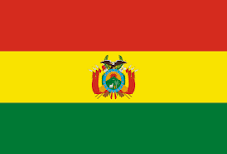
Bolivia’s public procurement system is regulated by the Law on Government Control Administration (1990) and other, more recent, secondary legislation, such as the Supreme Decree N181 on Basic Rules of the System of Administration of Goods and Services (2009). The procurement system lays out the basic principles and general framework of the procurement process, makes it operational and indicates how the law must be applied to specific circumstances, and it applies to every single public entity. However, there's no separate state body directly responsible for managing public procurement; rather, the function is assigned to a public servant within each public entity, directly designated as such by the maximum executive authority (MAE).
It is important to note, though, that the law also determines that the Ministry of Economy and Public Finances is the Governing Body in charge of the system and the information it generates. While this means the Ministry is ultimately responsible for the good functioning of the system, the responsibility of the individual process remains in the public entity.
There is one single centralized website: www.sicoes.gob.bo and its use is mandatory. The system requires that all tenders be published in the SICOES website. However, while the tender is made public online, it is not possible to apply online. Tenders are always conducted through formal paper-based channels. The proponent must prepare a formal proposal and include a series of legal documents and other requirements. All tender processes are published electronically in the SICOES system. Once it is published, then the process is paper-based and handled within each public entity. The results of the procurement process are also published.
The website was launched in 2001. It is operational, but the statistics, which are supposed to be an essential part of the system to fulfill the objective of transparency, are not accessible. It is possible to retrieve some information through the advanced search using filters, but this is limited. Even though there's a link in the page to "statistics" and it is clearly stated that the objective of the SICOES system is to provide information, the link is broken so it's not possible to retrieve any kind of information. The website is also technically difficult to use, since it uses JavaScript and information is presented in PHP format, which is not user-friendly and hard to use for stakeholders without the necessary skills.
Being unable to generate important statistics is a serious disadvantage to a centralized information system. SICOES currently does not generate data, such as:
- Average number of bidders, which is the main indicator used to measure the level of competition in the PP system;
- Prevalence of single source procurement (in countries where this is possible, it is often revealed that the use of direct procurement is alarmingly high, which then allows PP authorities to come up with ways of dealing with the issue and measuring progress);
- Percentage of public funds saved as a result of competitive tenders. The purpose of spending public funds through open tenders, as opposed to direct procurement, is to minimize cost through price competition. Not being able to generate this information means that there is no way of measuring success in this area.
Public Procurement Legislation available at the following - link.
Public Procurement Portal of Bolivia – link.
PPL evaluation - download.
Скоро будет